Billed as “perfect for minimalist camping”, the Terra Nova Jupiter Lite is a premium-quality bivvy bag with a hooped design. Featuring an aluminium pole and six pegging-out points, this bivvy bag feels less like a simple waterproof sack, and more like a tiny tent, as if Terra Nova has simply shrunk one of its much-loved backpacking shelters.
Some campers will love this approach; others may see it as over-engineering what should be a simple product.
The Jupiter Lite has good hydrostatic head waterproofing and MVTR breathability grades, is made from excellent materials and has a proven design. The looping, arched pole gives you 51cm of head height, which improves all-round comfort levels, and the bivvy opening features a bug mesh and a 100% waterproof seal. You get some excellent features that set this hooped bivvy apart from some of its competitors, but it’s heavier and more expensive than others too. So there are pros and cons.
 LFTO
LFTOPros
- Stable, durable construction
- Pegs included
- Relatively spacious
Cons
- Some rivals have higher waterproof and breathability ratings
- Heavier than some rivals (but still far from bulky)
| Weight | 580g (excl. pegs) |
| Packed size | 36 x 11cm |
| Dimensions | 230 x 70cm (shoulder)/45cm (foot) |
| Main material | 15D Moonlite ripstop nylon (groundsheet: 70D Waterbloc nylon) |
| Waterproof rating | 10,000mm HH |
| Breathability rating | 15,000g/m²/24 hour |
Design
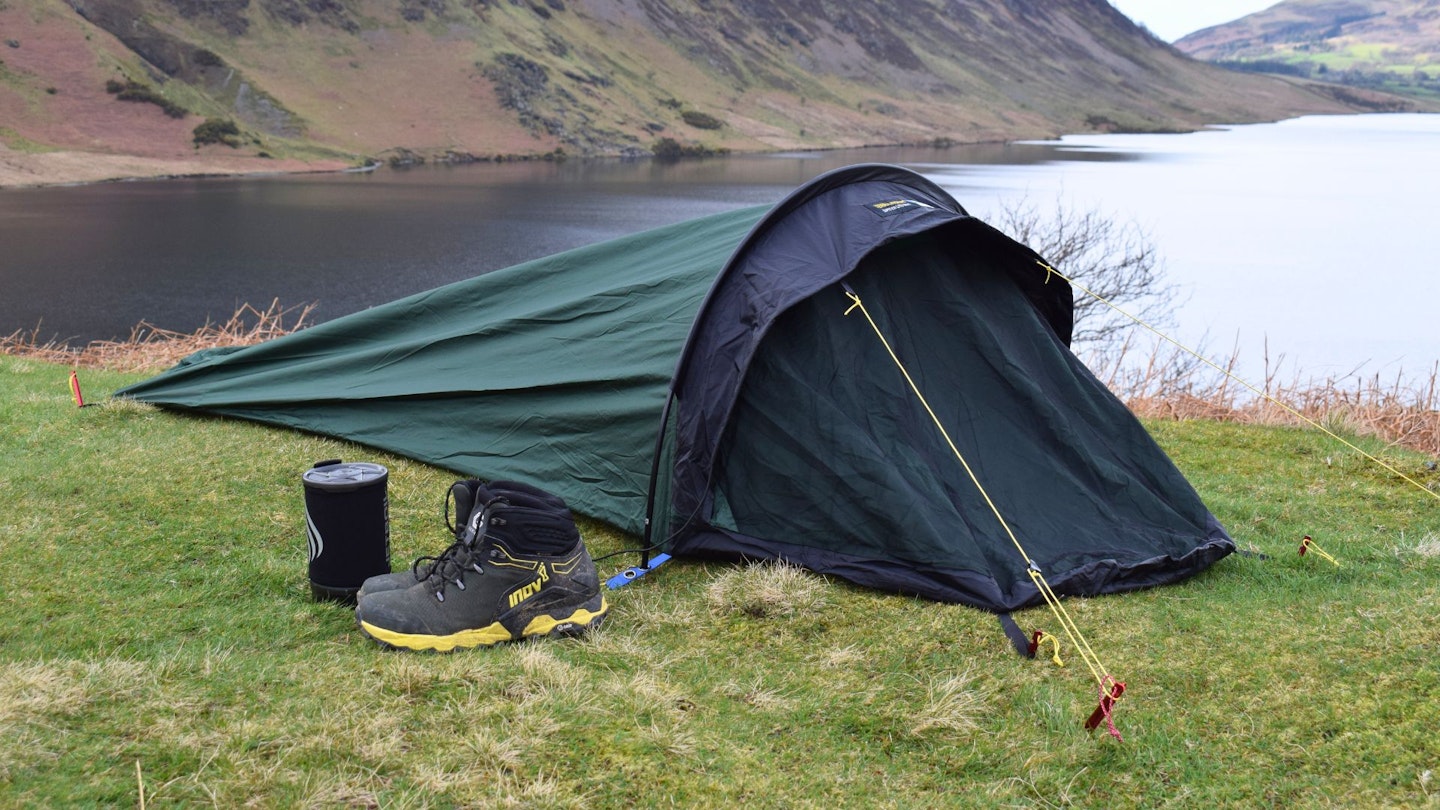
This bivvy bag has a near-identical design to the Outdoor Research Helium Bivy and the Lifesystems Venture Solo Hooped Bivi. They are all hooped bivvy bags with the same proven design: a single arched pole over the head, an integrated bug-net mesh covering, and pegging-out points to enhance the bivvy bag’s structure.

There are a few key differences, however. The drawbacks of the Jupiter Lite are that it’s expensive (£25 and £155 more than the Outdoor Research and Lifesystems offerings respectively) and a tad heavier (86g more than the Outdoor Research). The benefits of the Jupiter Lite are that it has a higher-quality, pre-curved central pole and six pegging out points (compared to two with the Outdoor Research and four with the Lifesystems), which all means you get a more taut, stretched-out and roomy structure to the Jupiter Lite.
Whether these pros are enough to warrant the extra cost and weight is debatable, but certainly some campers will love the Terra Nova approach.
Size, weight, and packability
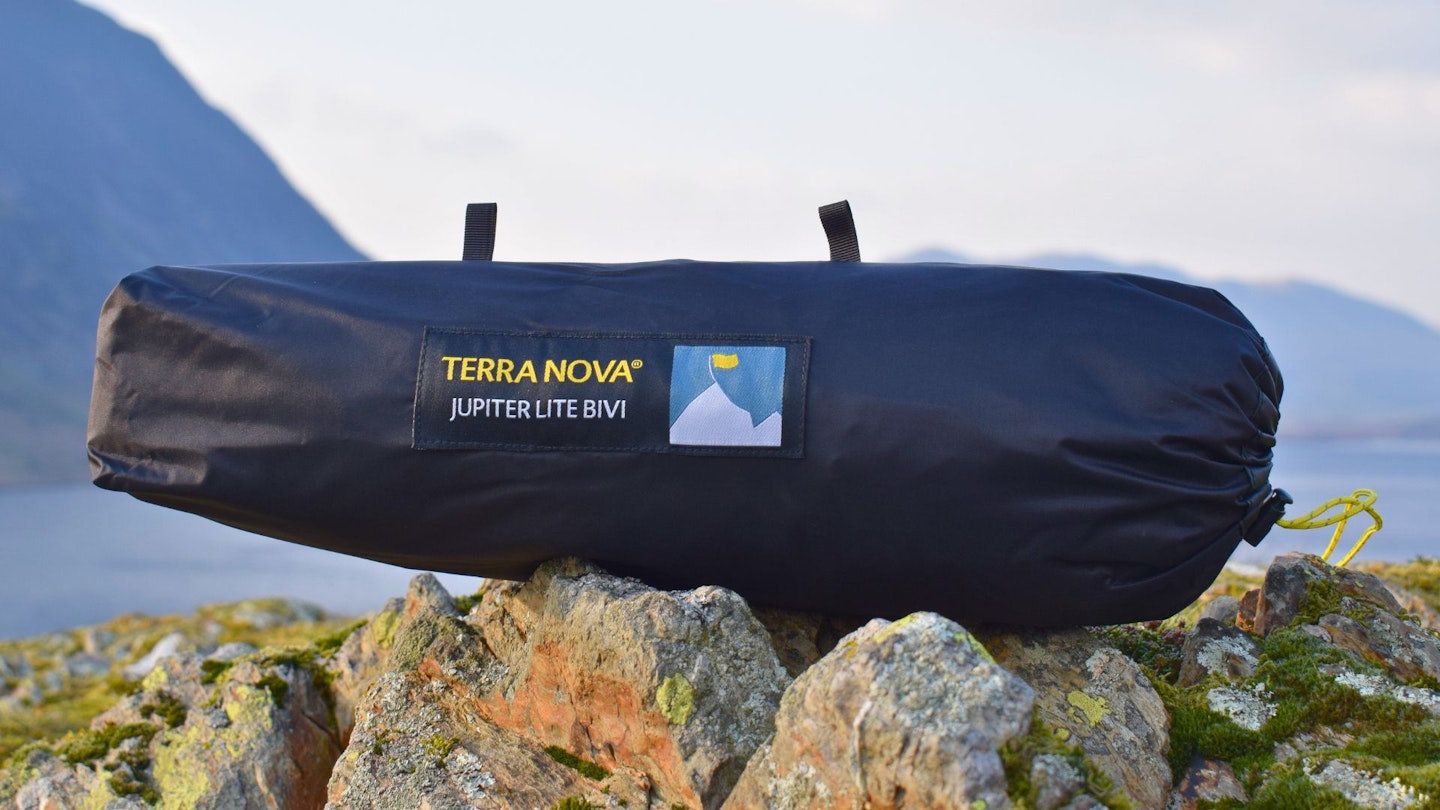
The Terra Nova website lists the weight of the Jupiter Lite as 770g, but on our scales it clocks in at 636g. This is broken down as follows: the bivvy bag itself is 444g, the pole is 99g, the six pegs are 56g, the pole/peg bag is 16g and the main carry bag is 21g. Without the pegs, the bivvy bag’s total weight is 580g. We’d describe this as mid-weight. It’s lighter than the 681g Lifesystems Venture Solo Hooped Bivi, but quite a lot heavier than the ultralight 494g Outdoor Research Helium Bivy.
In terms of its size, the Jupiter Lite has official dimensions as follows: 230cm long, 70cm wide at the shoulders and 45cm wide at the footbox (although by our measurements it’s only 45cm at the very base of the bivvy bag, and up to about 65cm where your feet will actually be located within the bag, unless you’re exceptionally tall).

These dimensions are marginally roomier – both in length and width – than the Outdoor Research Helium Bivy, and very similar to the dimensions of the Lifesystems Venture Solo Hooped Bivi. Overall, the Jupiter Lite bivvy bag has a nice size. It’s quite large with good volume and its extra length means you can potentially stash a backpack in the bottom of the bivvy bag, or use the top of the bivvy as a mini vestibule. But it’s not as big as some over-sized bivvy bags, such as the Alpkit Hunka XL, Mountain Warehouse Waterproof Bivvy Bag and Rab Trailhead Bivi.
The Jupiter Lite packs down compactly to about 36 x 11cm (according to our measurements), with a tall and thin shape. It can be stored in the storage sack provided, which has a drawstring closure. The narrow opening to the storage sack means the bivvy bag has to be rolled quite tightly and precisely to fit inside, but it’s still quite easy to do.
Waterproofing and breathability
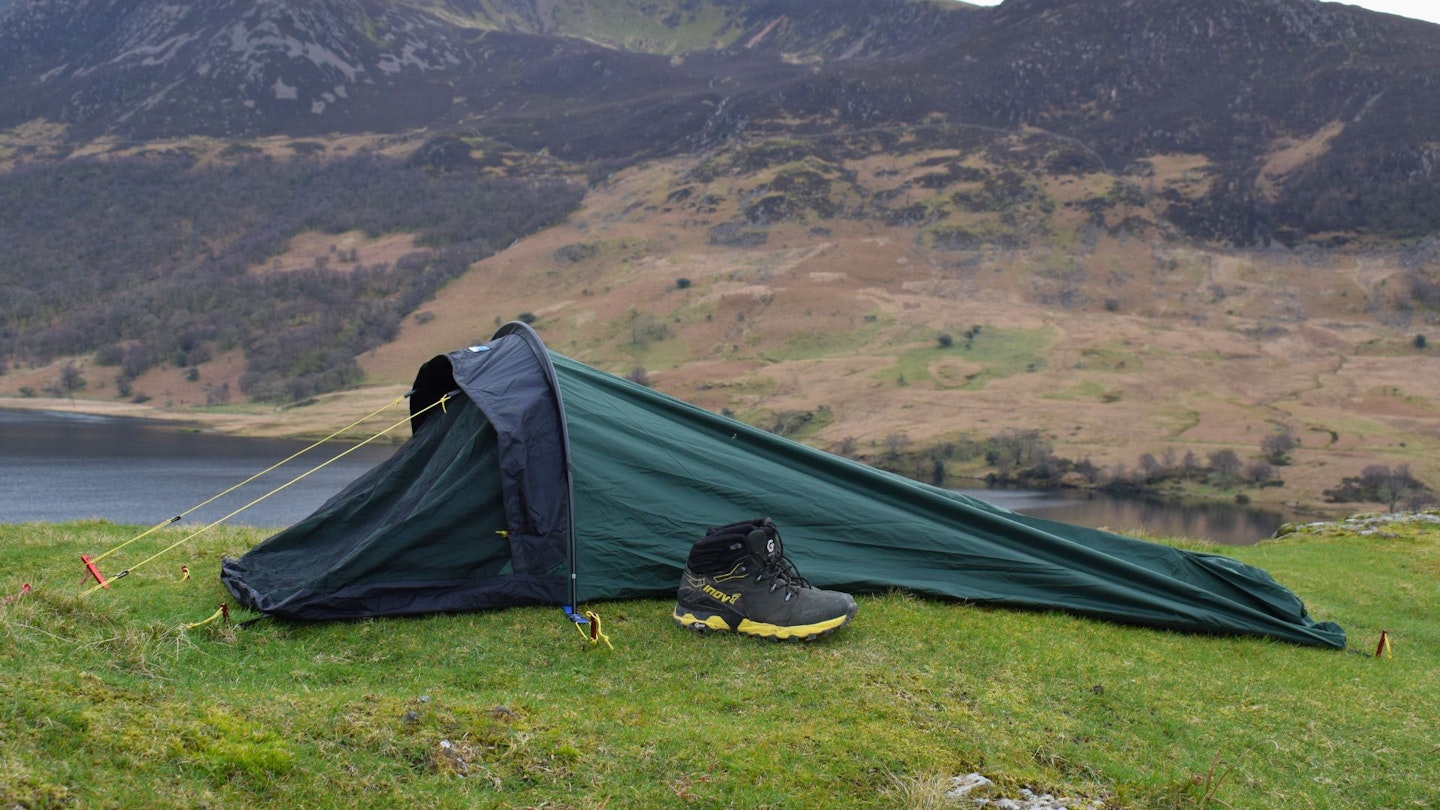
The Terra Nova Jupiter Lite has a hydrostatic head rating of 10,000mm and an MVTR breathability rating of 15,000g/m²/24hr, as well as fully taped seams. These are impressive stats and should ensure high levels of waterproofing and breathability, but for £275 we’d perhaps have hoped for 20k:20k waterproofing and breathability stats. The upper fabric of the Jupiter Lite is Terra Nova’s Moonlite fabric; the groundsheet is Terra Nova’s super-sturdy 70-denier Waterbloc fabric.

For comparison, the Outdoor Research Helium Bivy has a hydrostatic head rating of 20,000mm and a corresponding 20,000 g/m²/24hr MVTR breathability rating. The Terra Nova Jupter Lite is one level below this premium fabric, therefore, but its waterproofing and breathability stats are still impressive.
Waterproofing is further improved by the hooped structure. The arched pole in the Jupiter Lite creates steeper, sloping walls over the head, off which rain will shed better. Conversely non-hooped bivvies are just flat and thus rain has a tendency to pool on top of their fabrics.
Features
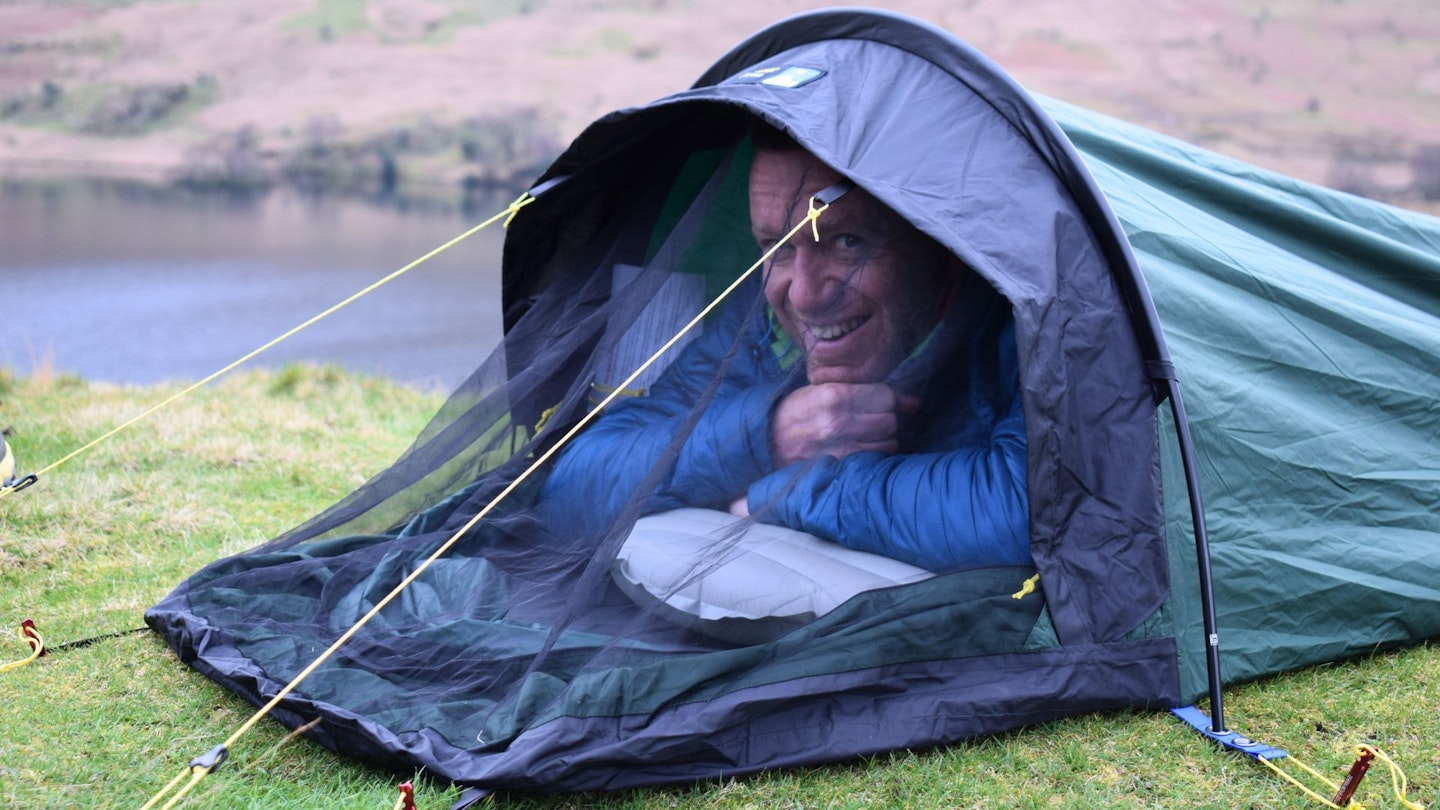
The Terra Nova Jupiter Lite is a classic hooped bivvy, using the same proven design almost all hooped bivvy bags use. A single pole is used to create the arched, semi-circular structure around the head. The Terra Nova pole is exactly like a tent pole. It is made from an aluminium alloy, and connected via shock-cord. The Outdoor Research Helium Bivy and Lifesystems Venture Solo Hooped Bivi have ultralight poles made from flexible, soft plastic. This is great for reducing weight, but Terra Nova’s “proper” pole is far stronger and provides a more stable structure. It's a welcome addition for those camping in more tumultuous weather.
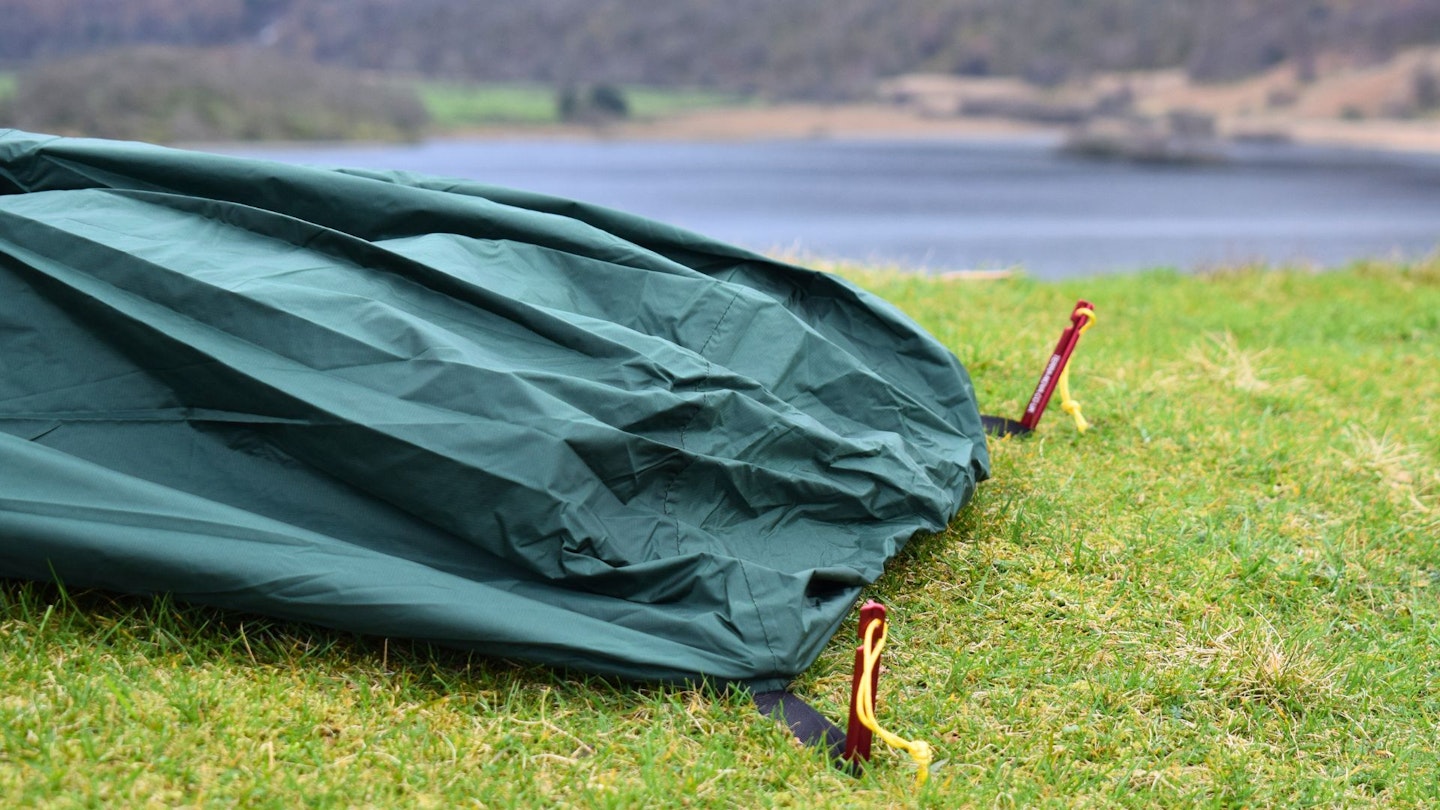
The Terra Nova pole is pre-curved, which helps to create the correct shape to the bivvy bag “ceiling”. The pole folds down into five segments 32cm in length; once erected the whole pole is 132cm long. The arch created with this pole is 51cm high, by our measurements. That’s 1cm higher than the Outdoor Research Helium Bivy and 6cm higher than the Lifesystems Venture Solo Hooped Bivi, so marginal gains. The pole is housed within a sleeve, while the metal feet of the pole are secured at each end in an eyelet. There are two eyelets for each pole tip, enabling you to fine-tune the tightness of the pole’s position.
In order to give the bivvy shape and structure, you get six pegging-out points – two at the head end, two at the foot end and two at the sides (next to each of the pole tips). You also get two guylines attached near to the “roof” of the bivvy for added structure and stability in wind. These stake points all work brilliantly, enabling you to peg out the bivvy bag in the same way you would a tent.
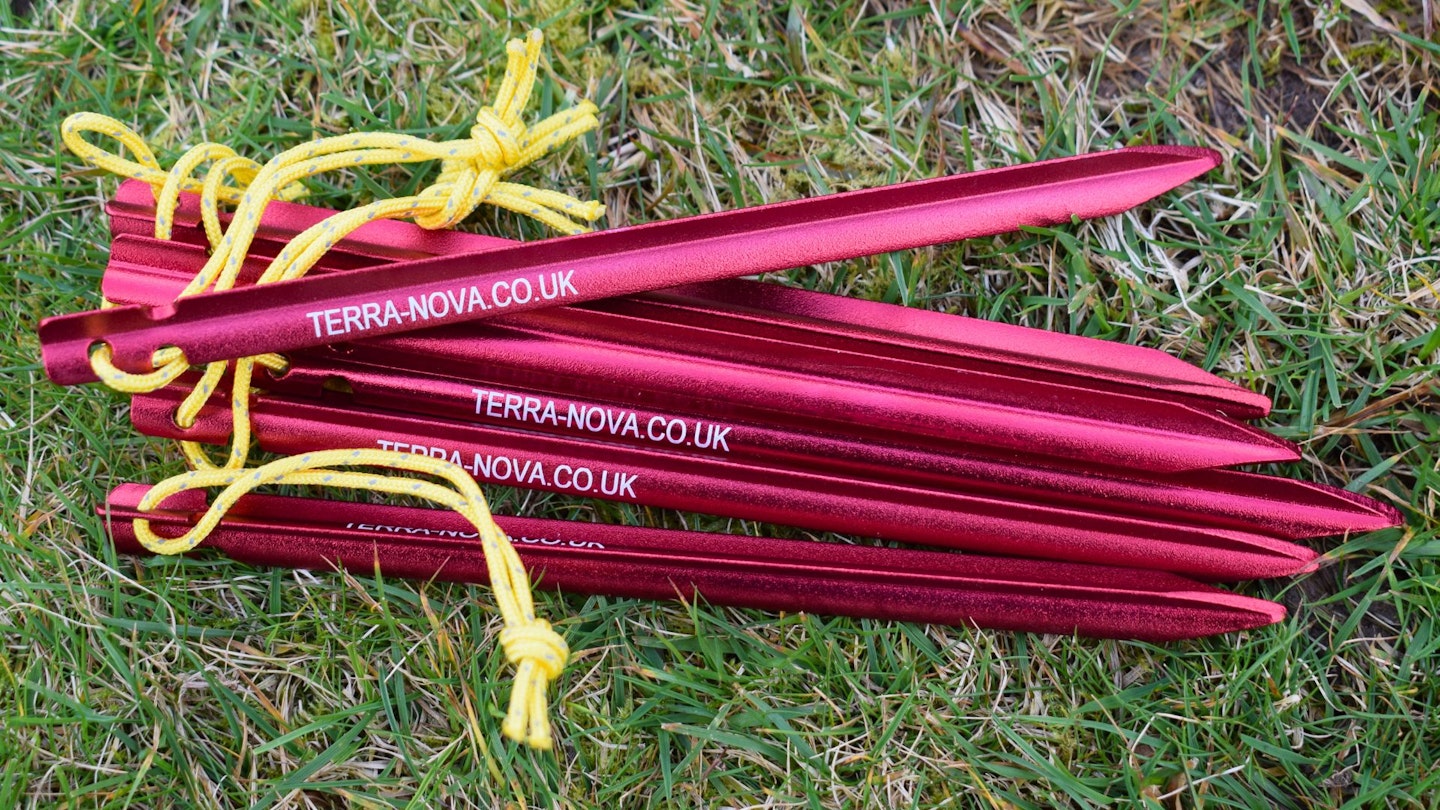
Consequently, the Jupiter Lite can be stretched out and made taut in a far more precise manner than other hooped bivvy bags. This adds to the sense of internal volume and comfort. Conveniently, six Terra Firma Mini Pegs are included with this bivvy bag. They have a tri-angled, Y-shape for enhanced grip and penetration, and feature little “pull loops” of cord.
Access to the Jupiter Lite is from the top via a wide opening. The opening is very versatile too, with the same design as most other hooped bivvy bags. On clear nights you can leave the opening unzipped; if midges are a problem you can zip up the No-See-Um mesh door; or for maximum waterproof protection you can 100% seal up the main zipper.
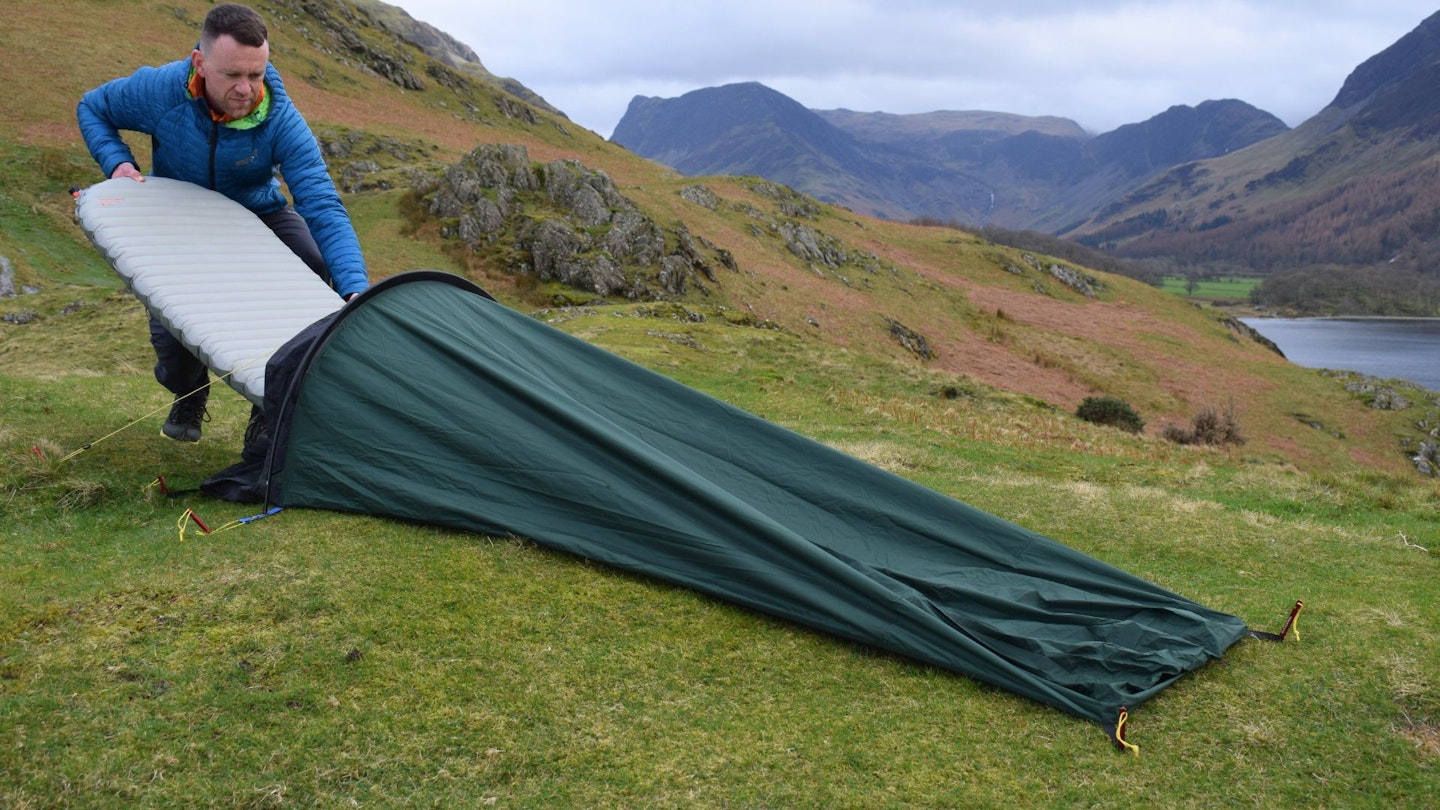
Another nice feature is a large stormflap of fabric which covers the main zipper, wrapping around the bivvy from side to side next to the pole. This creates a visor-like mini hood or canopy for enhanced weather protection. It’s a nice touch.
Verdict
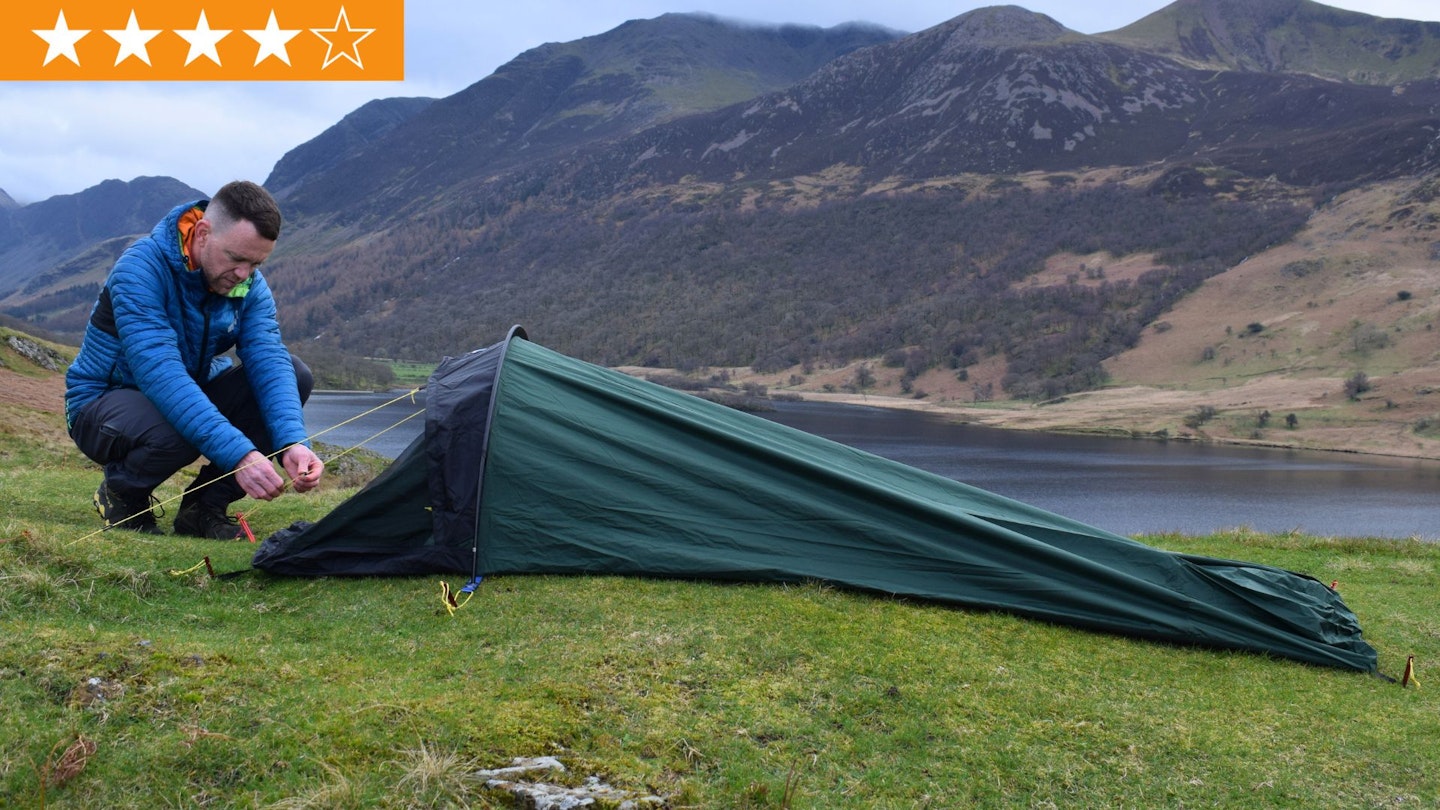
The Terra Nova Jupiter Lite Bivi is a hooped bivvy with an excellent pole and good pegging-out points – but it’s expensive and overkill for some.
How we tested

We tested the Terra Nova Jupiter Lite Bivi in the Lake District in spring alongside a selection of other bivvy bags as part of a group test.
James Forrest (above) conducted this test and review. James is one of the UK's most authoritative and high profile voices on wild camping and backpacking, being a prolific peak bagger and experienced freeland outdoor writer.
